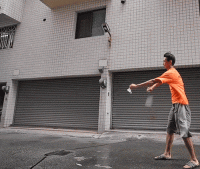
You know that there are two ways of creating animations on the web: with CSS and JavaScript. And, their selection completely depends on the dependencies of the project.
But many web developers hold a wrong perception that CSS is the only way of creating the animations. In fact, CSS has established as the most pampered system of the web development industry and most of the developers recommend it because it is mobile-friendly and powerful system.
No doubt CSS is good, but JavaScript is the best. There are various myths and misconceptions regarding CSS that need to sort out before you completely abandon JavaScript.
The regular usage of CSS has made developers feel confused while managing UI interaction within style sheets. They try everything to make their project compatible with the Internet Explorer 8 and 9.
In this post, we will find out the reasonable solutions of the myths associated with the CSS and also highlight the major problems that people face while using the CSS. Apart from this, this post will also discuss the multiple benefits of using JavaScript over CSS.
1. Lack of Control for Rotation and Positioning
The basic features of creating the animations are using the controls for animations, rotation and determining the positions. With this, you cannot create an animation. You can find all these functions into a common “transform” property and it can create problems to animate in an innovative way through the element.
But, with the JavaScript, you can animate the various elements separately with different timings. So, we can say that it is the biggest drawback of CSS that enable us to use JavaScript.
2. GPU factor play a significant role
A completely optimized GPU is best for performing the multiple tasks including playing with transform matrices and opacity. That is why all the compelling browsers first offload these tasks from CPU to the GPU. The main aim is to detach all the animated elements onto their GPU layers because the system is completed with the creation of layers and GPU will no longer show concern for shifting pixels and integrating them together. Thus, you don’t need to calculate each pixel all the time. Instead of this, you can save a lot of tome by moving one pixel over the other pixel.
On the other side, if you claim animations in CSS then it would be your browser’s responsibility to regulate the GPU layer of each element and then the division will occur automatically.
It is something that you can do with JavaScript as well. For this, you need to set a transform with a 3D feature to enable the browser know about the steps of creating GPU layer for the potential element. Through this, the GPU doesn’t only boost the speed to CSS, but to JavaScript as well.
3. jQuery
JavaScript and jQuery are wrongly integrated. Designing animations with JavaScript are quick and dynamic while jQuery is slow and takes a lot of time in completing the process. However, the primary objective of jQuery is not to perform the animations, but it is used for the following reasons:
- It cannot stop using layout thrashing because of its code based format that offers several other purposes beyond animations.
- jQuery is developed to use set intervals rather than Request Animation Frame (RAF). And if RAF is absent that low frame animations could generate.
4. Powerful JavaScript Animations
JavaScript can beat the CSS performance. JavaScript is faster than CSS. In fact, it is versatile when it comes to creating an impressive 3D animation demonstration which you can view through WebGL. It is also quick enough to create a multimedia teaser that can be developed by using Flash. In short, JavaScript is best for creating a virtual world.
5. Velocity and GSAP
Velocity and GSAP are the two most compelling and popular libraries in JavaScript. Both of them can work with or without the jQuery. And when you use both of the libraries with jQuery, then there is no degradation of performance as they work beyond the core jQuery animations.
Both of them can be used when jQuery is not displayed on the page. It means that instead of linking all types of animation calls into a common jQuery element, you can directly move the target element to the animation call.
* Working without jQuery */
Velocity(element, { opacity: 0.4 }, 900); // Velocity
In this example, you can see that the velocity utilizes the same syntax even when jQuery is not used. It just moved all the elements to the right direction to craft space for the targeted elements.
On the other hand, in GSAP an object-friendly API design has been used along with a basic static method. Through this, a user can completely control the animation process.
Conclusion
In this post, we have tried to explain you the benefits of using the JavaScript for creating animations over the CSS. But it doesn’t mean CSS animations are bad. They are good, but the only difference is that JS animations are much more flexible and compatible.
Author Bio: Lucy Barret is a Sr. Wordpress Developer by profession and a blogger by hobby. She works for WPGeeks and handles a team of WordPress developers who convert PSD to Wordpress theme with guaranteed 100% client satisfaction. Follow her company on various social media networks like Facebook, Twitter and Google+.

Thanks for that explain, very simple and easy to understand.